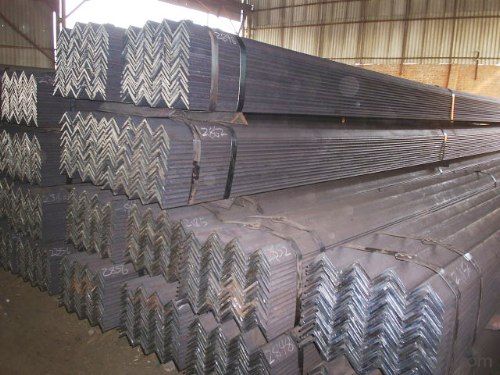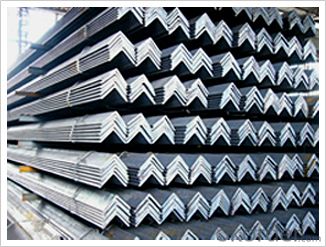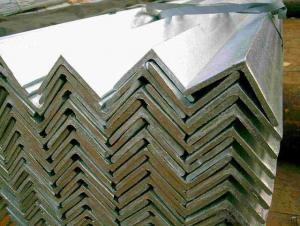Hot rolled sheet Equal Steel Angle bar DIN 1028
- Loading Port:
- Tianjin
- Payment Terms:
- TT or LC
- Min Order Qty:
- 25 m.t.
- Supply Capability:
- 100000 m.t./month
OKorder Service Pledge
OKorder Financial Service
You Might Also Like
Product Description:
OKorder is offering high quality Hot Rolled Steel I-Beams at great prices with worldwide shipping. Our supplier is a world-class manufacturer of steel, with our products utilized the world over. OKorder annually supplies products to European, North American and Asian markets. We provide quotations within 24 hours of receiving an inquiry and guarantee competitive prices.
Product Applications:
Hot Rolled Steel I-Beams are ideal for structural applications and are widely used in the construction of buildings and bridges, and the manufacturing, petrochemical, and transportation industries.
Product Advantages:
OKorder's Steel I-Beams are durable, strong, and resist corrosion.
Main Product Features:
· Premium quality
· Prompt delivery & seaworthy packing (30 days after receiving deposit)
· Corrosion resistance
· Can be recycled and reused
· Mill test certification
· Professional Service
· Competitive pricing
Product Specifications:
1.Grade: SS200,300,400 series
2.Size: 25×25×3 mm-100×100×10mm
3.Process: HRAP
4. Length: 2-6m
5. Shape: Equal
6. Delivery: within 20 days
7. MOQ: 1 ton
8. Certificate: ISO 9001:2008, SGS
9. Package:Standard Export Packing, or put into wooden boxes according to your requirement
10. Application: Construction, Marine, Industry and so on
Name | Stainless Steel Angles | ||||||
Standard | ASTM A554, A312, A249, A269 and A270 | ||||||
Material Grade | 304,316,201,202, 316L,430 | ||||||
Length | 6m or as customers' request | ||||||
Tolerance | a) thickness: +/-0. 15mm | ||||||
b) Length:+/-4. 5mm - 0mm | |||||||
Surface | 180G, 320G, 400G Satin / Hairline(Matt Finish, Brush, Dull Finish) 400G, 500G, 600G or 800G Mirror finish | ||||||
Application | Decoration construction, upholstery, industry instruments | ||||||
Test | Squash test, Extended test, Water pressure test, Crystal rot test, Heat treatment, NDT | ||||||
Chemical Composition of Material |
Composition
Material | 201 | 202 | 304 | 316L | 430 | |
C | ≤0.15 | ≤0.15 | ≤0.08 | ≤0.08 | ≤0.12 | ||
Si | ≤1.00 | ≤1.00 | ≤1.00 | ≤1.00 | ≤1.00 | ||
Mn | 5.5-7.5 | 7.5-10 | ≤2.00 | ≤2.00 | ≤1.00 | ||
P | ≤0.06 | ≤0.06 | ≤0.045 | ≤0.045 | ≤0.040 | ||
S | ≤0.03 | ≤0.03 | ≤0.030 | ≤0.030 | ≤0.030 | ||
Cr | 16-18 | 17-19 | 18-20 | 16-18 | 16-18 | ||
Ni | 3.5-5.5 | 4-6 | 8-10.5 | 10-14 | |||
Mo | 2.0-3.0 | ||||||
Mechanical Property | Material Item | 201 | 202 | 304 | 316L | ||
Tensile Strength | ≥535 | ≥520 | ≥520 | ≥520 | |||
Yield Strength | ≥245 | ≥205 | ≥205 | ≥205 | |||
Extension | ≥30% | ≥30% | ≥35% | ≥35% | |||
Hardness (HV) | <253 | <253 | <200 | <200 | |||
FAQ:
Q1: How do we guarantee the quality of our products?
A1: We have established an advanced quality management system which conducts strict quality tests at every step, from raw materials to the final product. At the same time, we provide extensive follow-up service assurances as required.
Q2: What makes stainless steel stainless?
A2: Stainless steel must contain at least 10.5 % chromium. It is this element that reacts with the oxygen in the air to form a complex chrome-oxide surface layer that is invisible but strong enough to prevent further oxygen from "staining" (rusting) the surface. Higher levels of chromium and the addition of other alloying elements such as nickel and molybdenum enhance this surface layer and improve the corrosion resistance of the stainless material.
Images:



- Q:How do you prevent steel angles from warping?
- There are several measures you can take to prevent steel angles from warping: 1. Proper storage: Ensure that steel angles are stored in a dry and controlled environment to avoid exposure to moisture. Moisture can lead to rust and warping of the angles. Use pallets or racks to store them horizontally to minimize any bending stress. 2. Controlled cooling: During the fabrication process, it is important to have controlled cooling to prevent rapid temperature changes that can induce warping. Gradual cooling methods, such as air cooling or controlled cooling baths, can help avoid thermal stresses and minimize warping. 3. Minimize heat input during welding: When welding steel angles, excessive heat input can cause localized thermal expansion and contraction, leading to warping. Use proper welding techniques, such as shorter welding times, smaller weld beads, and intermittent welding, to minimize heat input and control the temperature gradient. 4. Preheating and post-welding stress relief: For thicker or high-strength steel angles, preheating them before welding can help reduce the risk of warping. Additionally, performing post-welding stress relief heat treatments can help relieve any residual stresses within the material and prevent warping. 5. Proper handling and transportation: When transporting steel angles, ensure that they are adequately supported and secured to avoid any bending or flexing during transit. Avoid dropping or mishandling the angles, as this can introduce structural deformations that lead to warping. By implementing these preventive measures, you can minimize the risk of steel angles warping and ensure their structural integrity for various applications.
- Q:Are steel angles suitable for reinforcing concrete structures?
- Yes, steel angles are suitable for reinforcing concrete structures. Steel angles are commonly used in construction as they provide strength, stability, and support to concrete structures. By adding steel angles to reinforce concrete, the overall structural integrity of the building or structure is enhanced, ensuring its durability and resistance to various loads and forces.
- Q:Can steel angles be used for solar panel mounting?
- Solar panel mounting can indeed utilize steel angles. The utilization of steel angles in solar panel mounting systems is prevalent owing to their robustness, longevity, and adaptability. They furnish a stable and secure framework to bear the weight of the solar panels and endure environmental elements such as intense winds and substantial snow loads. Steel angles additionally facilitate effortless modification and positioning of the solar panels to optimize exposure to sunlight. Furthermore, steel angles can be readily tailored and manufactured to meet precise project specifications, rendering them a favored option within the solar sector.
- Q:What are the different methods of surface protection for steel angles?
- There are several different methods of surface protection for steel angles, each with its own advantages and disadvantages. 1. Painting: One of the most common methods of surface protection is painting. This involves applying a layer of paint to the steel angle to create a barrier between the steel and the surrounding environment. Paint can provide both aesthetics and protection against corrosion. However, it may require regular maintenance and can be prone to chipping or peeling over time. 2. Galvanization: Galvanization is a process where a layer of zinc is applied to the surface of the steel angle. This creates a protective barrier that helps prevent corrosion. Galvanization can be done through either hot-dip galvanizing or electro-galvanizing. Hot-dip galvanizing involves immersing the steel angle in a bath of molten zinc, while electro-galvanizing uses an electrical current to deposit zinc onto the surface. Galvanized steel angles are highly resistant to rust and can provide long-lasting protection. 3. Powder coating: Powder coating is a dry finishing process where a fine powder is electrostatically applied to the surface of the steel angle. The powder is then cured under heat to form a hard, durable coating. Powder coating provides excellent protection against corrosion, impacts, UV rays, and chemicals. It also offers a wide range of color options and a smooth, attractive finish. However, it can be more expensive than other methods and requires specialized equipment for application. 4. Epoxy coating: Epoxy coatings are a type of protective finish made from epoxy resins. These coatings are highly resistant to chemicals, impacts, and abrasions. They provide a tough, glossy finish that can withstand harsh environments. Epoxy coatings are typically applied through a two-part system, where a resin and a hardener are mixed together before being applied to the steel angle. While epoxy coatings provide excellent protection, they can be more expensive and time-consuming to apply. 5. Metal plating: Metal plating involves covering the steel angle with a layer of metal such as chrome, nickel, or zinc. This provides a decorative finish as well as protection against corrosion. Metal plating can be done through electroplating or electroless plating processes. Electroplating uses an electrical current to deposit a thin metal layer onto the surface, while electroless plating does not require electricity and utilizes a chemical reaction to achieve the plating. Metal plating can enhance the appearance and durability of steel angles, but it may not be as effective in highly corrosive environments.
- Q:Can steel angles be used for railings or barriers?
- Absolutely, railings or barriers can indeed utilize steel angles. In construction, steel angles are widely employed and renowned for their robustness and longevity. They furnish a solid and dependable framework for railings and barriers, guaranteeing the safety and security of the surroundings. The assembly and customization of steel angles are a breeze, as they can be effortlessly welded or bolted together. Furthermore, these angles can be coated or painted to enhance their aesthetic appeal and safeguard against rust and corrosion. All in all, owing to their strength, adaptability, and enduring nature, steel angles are a highly favored option for railings and barriers.
- Q:Can steel angles be used for support beams in warehouse construction?
- Yes, steel angles can be used for support beams in warehouse construction. Steel angles are commonly used as structural components in various construction projects, including warehouses. They offer excellent strength and durability, making them suitable for supporting heavy loads and providing structural stability. Steel angles can be easily fabricated and customized to meet specific design requirements, making them a versatile choice for constructing support beams in warehouse construction. Additionally, steel angles are resistant to corrosion, which is crucial in warehouse environments where exposure to moisture and chemicals is common. Overall, steel angles are a reliable and cost-effective option for support beams in warehouse construction.
- Q:What is the bending capacity of a steel angle?
- The bending capacity of a steel angle refers to its ability to withstand bending or flexing without breaking or deforming excessively. It is a measure of the angle's structural strength and is typically determined by factors such as the dimensions and thickness of the angle, the type of steel used, and any additional reinforcements or supports present. The bending capacity is usually expressed in terms of the maximum amount of load or stress that the angle can endure before it reaches its yield point, which is the point at which it permanently deforms. The bending capacity of a steel angle can vary widely depending on these factors, and it is crucial to consider this capacity when designing and constructing structures that utilize steel angles to ensure their structural integrity and safety.
- Q:How do you prevent steel angles from twisting?
- To prevent steel angles from twisting, proper bracing and support should be provided during installation. Additionally, using welds or mechanical fasteners at appropriate intervals along the length of the angle can help to enhance its stability and prevent twisting.
- Q:Can steel angles be used in high-rise buildings?
- Yes, steel angles can be used in high-rise buildings. Steel angles are commonly used as structural members in high-rise buildings due to their strength, versatility, and cost-effectiveness. They can be used in various applications such as framing, bracing, and supporting loads. Steel angles provide stability and structural integrity to the building, allowing it to withstand the forces and stresses associated with high-rise structures. Additionally, steel angles can be easily fabricated, manipulated, and connected, making them suitable for the complex and intricate designs often found in high-rise buildings. Overall, steel angles are a reliable and commonly used component in the construction of high-rise buildings.
- Q:What are the different shapes available for steel angles?
- There are several different shapes available for steel angles, each serving a specific purpose in various construction and structural applications. The most common shapes of steel angles include: 1. Equal angles: These angles have equal legs and are formed by bending a single piece of steel. They are commonly used for general structural applications, such as supporting beams and columns. 2. Unequal angles: As the name suggests, these angles have unequal legs and are often used when one leg needs to be longer or shorter than the other. These angles are commonly used in construction, where they provide additional strength and support in various applications. 3. L-shaped angles: These angles have one leg longer than the other, forming an L-shape. They are commonly used for reinforcing corners and edges of structures, providing additional strength and support. 4. T-shaped angles: These angles have a longer leg that extends perpendicular to a shorter leg, forming a T-shape. They are commonly used as lintels or beams to support loads above openings like doors and windows. 5. C-shaped angles: These angles have one side curved inward, forming a C-shape. They are commonly used in applications where the angle needs to fit around a curved or rounded surface, providing structural support and reinforcement. Overall, the availability of different shapes for steel angles allows for a wide range of applications in construction and structural engineering, providing strength, support, and versatility in various projects.
1. Manufacturer Overview |
|
|---|---|
| Location | |
| Year Established | |
| Annual Output Value | |
| Main Markets | |
| Company Certifications | |
2. Manufacturer Certificates |
|
|---|---|
| a) Certification Name | |
| Range | |
| Reference | |
| Validity Period | |
3. Manufacturer Capability |
|
|---|---|
| a)Trade Capacity | |
| Nearest Port | |
| Export Percentage | |
| No.of Employees in Trade Department | |
| Language Spoken: | |
| b)Factory Information | |
| Factory Size: | |
| No. of Production Lines | |
| Contract Manufacturing | |
| Product Price Range | |
Send your message to us
Hot rolled sheet Equal Steel Angle bar DIN 1028
- Loading Port:
- Tianjin
- Payment Terms:
- TT or LC
- Min Order Qty:
- 25 m.t.
- Supply Capability:
- 100000 m.t./month
OKorder Service Pledge
OKorder Financial Service
Similar products
New products
Hot products




























